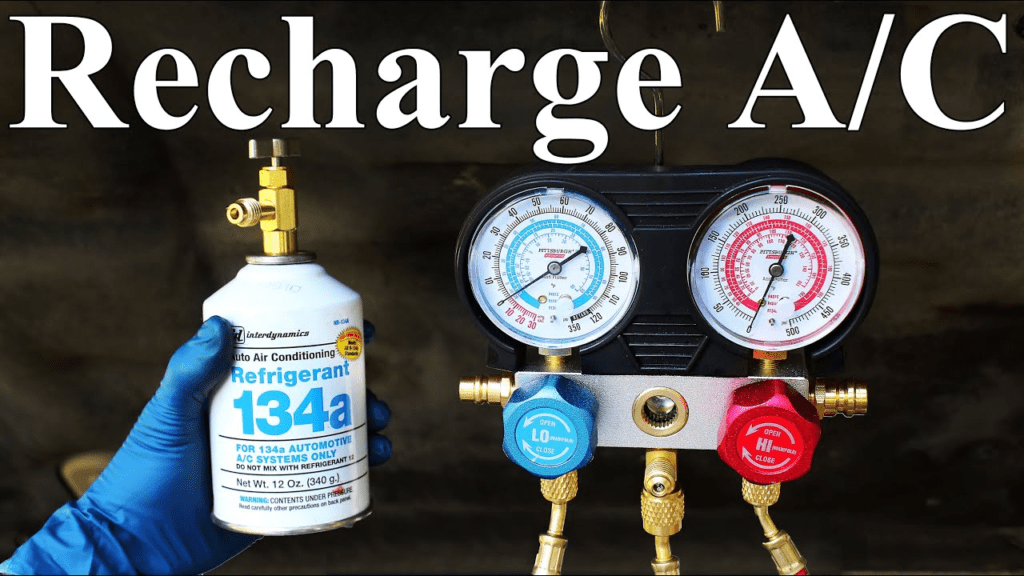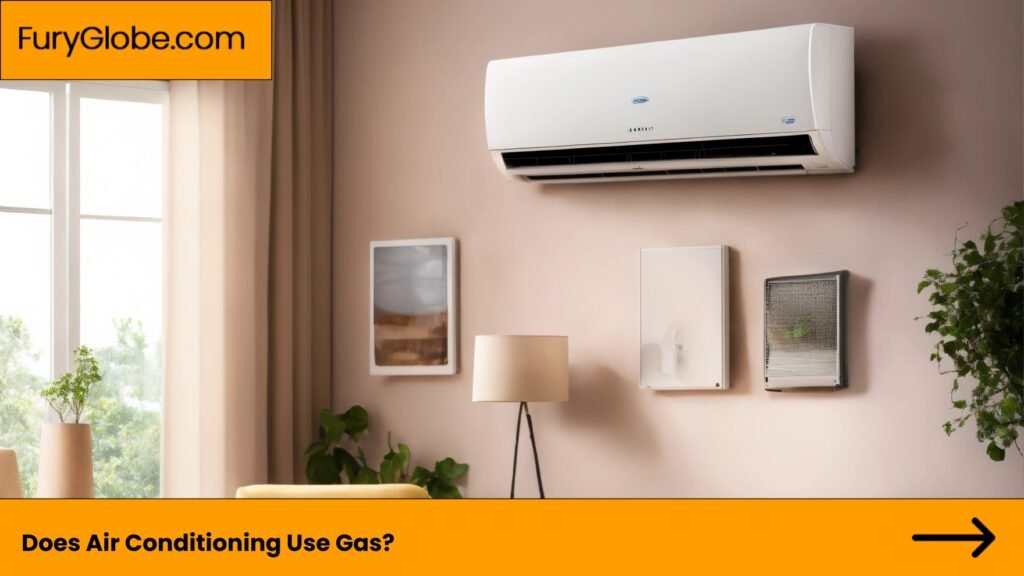Air conditioning is a common household appliance, but many homeowners are unsure about the power source that fuels their cooling systems. Whether your AC unit is gas-powered or electric can have important implications for maintenance, repair costs, and energy efficiency. In this introduction, we’ll shed light on the inner workings of air conditioning systems to help you determine the type of power source used in your home. With this knowledge, you can make informed decisions about your home’s climate control setup and potentially optimize your energy usage and costs.


Read also: How to Tuft a Rug?
Table of Contents
ToggleThe Inner Workings of Air Conditioning
Air conditioning systems rely on the unique properties of certain chemicals, known as refrigerants, to facilitate the cooling process. These refrigerants can easily transition between liquid and gas states as pressure is adjusted, allowing them to absorb and release heat.



The cooling cycle begins with a compressor, which pressurizes the refrigerant, turning it into a dense, heat-laden gas. This gas then passes through the condenser coils, where the heat radiates away, causing the refrigerant to condense back into a liquid. The liquid refrigerant then moves through an expansion valve, which lowers its pressure and temperature dramatically.
A fan blows air over the now-cold coils, and the air is cooled as the refrigerant evaporates, absorbing heat from the surrounding environment. The warm refrigerant vapor then re-enters the compressor, and the cycle starts anew. All the components involved in this process, from the compressor to the fans, are powered by electricity – there are no gas-powered air conditioning units.
Clearing the Confusion Around “Gas-Powered” AC
While searching for information on air conditioning, you may come across references to “gas-powered” or “gas-fueled” units. This can create confusion, as it contradicts the fact that all air conditioners use electricity to power their crucial components. The key is understanding the difference between the refrigerant gas used in the cooling cycle, and the fuel source that powers the overall system.



The refrigerant gas, which undergoes liquid-to-gas phase changes to enable cooling, is not the same as the fuel that powers the air conditioner. This refrigerant gas is fully contained within a sealed system and does not serve as the primary energy source. The confusion stems from the use of the word “gas” to describe both refrigerant and potential fuel sources like natural gas or propane, which are sometimes used in heating systems but not in air conditioners.
Air Conditioner vs. Air Conditioning



It’s important to distinguish between “air conditioner” and “air conditioning” when discussing climate control systems. An air conditioner refers specifically to the type of refrigerant-based cooling system described above. However, the broader term “air conditioning” can encompass any technology or technique used to regulate the temperature and humidity of indoor air, including both cooling and heating methods.
For example, a furnace that uses natural gas or fuel oil to heat air and distribute it through a ductwork system could be considered a form of “air conditioning,” even though it does not provide cooling. Similarly, a heat pump that can both heat and cool a space would also fall under the “air conditioning” umbrella, even though it uses electricity rather than a combustible fuel source.
Differentiating Central Air and Central AC
Another source of potential confusion is the distinction between “central air,” “central air conditioning,” and “central heat.” Central air typically refers to a forced-air heating system that uses a furnace to warm air and distribute it through ductwork, regardless of the fuel source (electricity, natural gas, or fuel oil).
Central air conditioning, on the other hand, specifically denotes a refrigerant-based cooling system where the air is chilled in a central location and then circulated through the same ductwork as the heating system. This allows for whole-home climate control from a single, centralized unit.
It’s easy to see how the terms “central air” and “central AC” could be used interchangeably, even though they technically refer to different climate control technologies. Understanding these nuances can help homeowners make informed decisions about their home’s heating and cooling needs.
Recharging Refrigerant Vs. Powering the System
One final source of confusion regarding air conditioning systems is the concept of “recharging the gas.” This refers to the process of replenishing the refrigerant within the sealed cooling system, not to providing fuel for the air conditioner itself.



Modern air conditioners are designed to be airtight, preventing the refrigerant from escaping. However, small leaks can sometimes develop, requiring the system to be recharged with additional refrigerant. This is an important maintenance task, as running an air conditioner with insufficient refrigerant can damage the compressor and other components.
It’s important to note that the refrigerant gas is not the primary power source for the air conditioner. The need to recharge the gas does not mean the system is “gas-powered.” All the major components, from the compressor to the fans, are electrically operated. Recharging the refrigerant is simply a necessary step to keep the cooling cycle functioning properly.
Harnessing the Power of Evaporative Cooling: An Efficient and Eco-Friendly Alternative
Evaporative Coolers: The Electricity-Powered, Water-Based Solution
Unlike traditional air conditioning units that rely on refrigerant gases, evaporative coolers operate on a fundamentally different principle. These systems function by leveraging the process of evaporation to lower the temperature of the air. Rather than compressing and circulating gases, evaporative coolers use an efficient pump and fan to draw in warm air and pass it over water-saturated pads. As the water evaporates, it removes heat from the air, resulting in a cooling effect.



This evaporative approach offers several key advantages. First and foremost, evaporative coolers are significantly more energy-efficient than their refrigerant-based counterparts. They do not require the power-hungry compressor that is a crucial component of traditional air conditioners. Instead, the only electrical components needed are the pump and fan, which consume far less energy. This translates to lower operating costs and a more sustainable cooling solution for your home.
Moreover, evaporative coolers are environmentally friendly, as they do not rely on harmful refrigerant gases. There is no risk of these gases leaking and causing damage to the atmosphere. When the time comes to replace the unit, there are no special considerations or disposal requirements for refrigerants. The simplicity of the evaporative cooling mechanism also means fewer moving parts, potentially leading to lower maintenance needs and a longer lifespan for the system.
Harnessing the Efficiency of Evaporative Cooling
Evaporative cooling works by leveraging the natural process of water evaporation to lower the temperature of the air. As warm air passes over the water-soaked pads, the water absorbs heat from the air, causing it to evaporate. This evaporative process inherently reduces the air temperature, creating a cooling effect that can be circulated throughout your living space.
One of the key advantages of this approach is its energy efficiency. Traditional air conditioners rely on energy-intensive compressors to circulate refrigerant gases, which can significantly increase your electricity bills. In contrast, evaporative coolers only require a pump and a fan to operate, consuming far less power. This makes them a more cost-effective option, particularly in regions with hot, dry climates where evaporative cooling is highly effective.
Furthermore, evaporative coolers are environmentally friendly, as they do not utilize harmful refrigerant gases. This eliminates the risk of gas leaks and the associated environmental concerns. When it’s time to replace the unit, there are no special disposal requirements for refrigerants, making the process simpler and more sustainable.
The Simplicity and Versatility of Evaporative Cooling Systems
Evaporative cooling systems are renowned for their simplicity and versatility. Unlike complex air conditioning units, evaporative coolers have a straightforward design with fewer moving parts. This not only contributes to their energy efficiency but also generally translates to lower maintenance requirements and a longer lifespan for the system.
At the heart of an evaporative cooler is a water-soaked pad, often made of materials like wood, cellulose, or synthetic fibers. As the fan draws in warm air and passes it over the saturated pad, the water evaporates, absorbing heat and lowering the air temperature. The cooled air is then circulated throughout the living space, providing a refreshing and comfortable environment.
One of the key advantages of this approach is its suitability for dry climates. Evaporative cooling works best in regions with low humidity, as the evaporation process is more efficient in drier air. In contrast, traditional air conditioners can struggle to effectively cool and dehumidify the air in hot, arid environments.
Furthermore, evaporative coolers are highly versatile and can be used in a variety of settings, from residential homes to commercial buildings. Their modular design allows for easy installation and integration into different types of structures, making them a flexible and adaptable cooling solution.
Conclusion
In answering the question “Does Air Conditioning Use Gas?”, we’ve clarified that traditional air conditioners use electricity to power their components, including the compressor that circulates refrigerant gases in a closed system. These systems are effective for cooling but can be energy-intensive and pose environmental risks if refrigerants leak.
Evaporative coolers offer an alternative cooling method that uses electricity and water, without relying on refrigerant gases. This approach provides benefits in energy efficiency and environmental safety, especially in dry climates. Both cooling options have their place in modern climate control, and the best choice depends on individual needs, local climate conditions, and energy considerations.
FAQs
Does air conditioning use a lot of gas?
As a general answer, a Consumer Reports study found that running the AC reduces gas mileage. Here are some tips to help you balance your fuel consumption with comfort. Generally, the air conditioner uses gas, so use it wisely.
Does it cost gas to run the AC?
It’s better to run the AC when on the highway to keep your passengers comfortable during the summer. So, yes, your air conditioning in the car does use gas. It might reduce your fuel efficiency by as much as 20% at some points. It depends on driving conditions.
Does air conditioning run on gas or electricity?
Air conditioning units are electric systems, and they work in a fundamentally different way compared to gas-powered furnaces. In this blog, we’ll discuss the inner workings of air conditioning systems, explore the available types, and help you make informed decisions about your home’s cooling needs.






